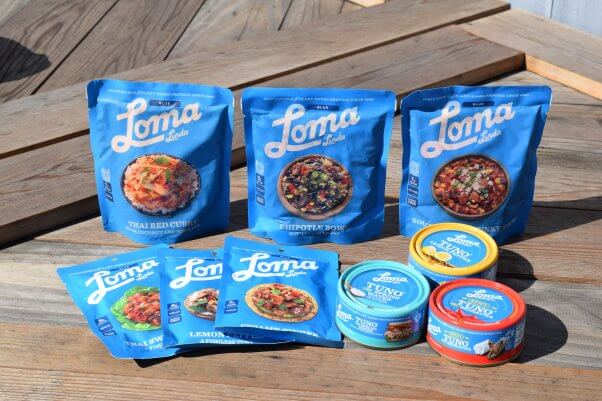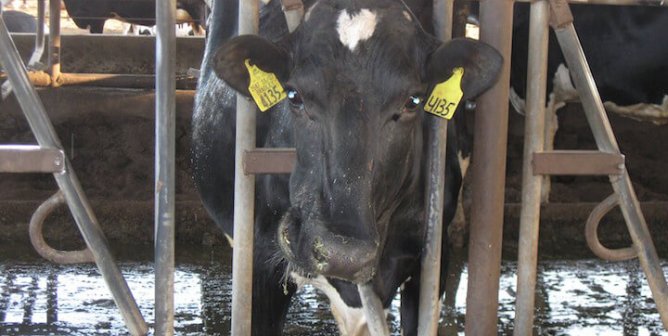Disaster preparedness isn’t necessarily a fun thing to think about, but it’s important to have plans in place in case of natural disasters or other types of emergencies. By preparing now, you can ensure that you’ll have the resources you’ll need to shelter in place or safely evacuate in the event of a fire, a hurricane, a tornado, an earthquake, a flood, or other natural or human-made disasters. Make sure that you’re preparing with animals in mind by keeping your supplies vegan and cruelty-free and ensuring that your plan takes all your animal companions into consideration.
Here’s how to make your own vegan emergency-prep kit:
Food
Emergency preparedness always starts with the core essentials: food and water. Whether or not you have electricity and gas in an emergency can affect what types of food you’ll be able to prepare. Luckily, most shelf-stable foods are vegan. Grains such as rice and quinoa are inexpensive and long-lasting options, but they require boiling water to prepare. If you stockpile foods that require cooking, be sure to have a camping stove and plenty of fuel on hand. Don’t worry about trying to stock up on every type of food—just choose a few staples, then add in some spices, condiments, and snacks for variety. The following are some nonperishable vegan options.
- Packaged and prepared foods: Canned soups and chili, Veestro meals, Loma Linda meals, backpacking foods, dried soup mixes, packaged ramen noodles, and pancake mix
- Grains: Bulk rice, quinoa, couscous, oats, pasta, amaranth, and instant rice
- Proteins: Dried or canned beans, chickpeas and lentils, textured vegetable protein, vegan meats, and shelf-stable tofu
Tip: Save the liquid from canned beans to use for cooking or rehydrating freeze-dried foods.
- Veggies and fruit: Fruit canned in juice; canned green beans, spinach, carrots, corn, tomatoes, peas, and mushrooms; dried fruit such as raisins, prunes, apricots, mandarins, mangoes, pineapples, and dates; and freeze-dried berries
Tip: Drink the juice from canned fruit for additional hydration.
- Extras: Shelf-stable or powdered nondairy milk; pumpkin, hemp, or chia seeds; ketchup, mustard, soy sauce, and hot sauce packets; spices; sugar; vegetable broth or bouillon cubes; nut butter packets; protein powder; and coffee and tea
Tip: Grab some extra condiment packets when you get takeout or fast-food so that you can spice up your food.
- Snacks: Peanuts, cashews, almonds, walnuts, and other nuts; granola and energy bars; cookies; chips; vegan jerky; and crackers
Water
After natural disasters like earthquakes, the water supply is likely to be contaminated or cut off, and it may take several days for emergency services to reach your area. Pandemics can potentially affect water availability, too. A good rule of thumb is to store 1 gallon of water per person (and animal companion) per day for at least three days but preferably more. Keep in mind that individual needs may vary and that you may need water for uses other than staying hydrated, such as cooking or washing up.
Other Items
- Toiletries, medicines, and first aid: Toilet paper, soap, dry shampoo, cruelty-free cleansing wipes, and a first aid kit
- For infants and children: Diapers, baby wipes, shelf-stable baby food, and toys and games to keep them occupied
- For animal companions: In addition to having extra water for your animal companions, make sure that you have an extra supply of food and treats. Throw in some special toys, too, and always make sure that you have an emergency alert sticker filled out.
- Optional: A pack of cards, puzzles, batteries, a can opener, candles, matches, a hand-cranked radio, a flashlight, a sewing kit, leather-free gloves, goggles, and a multi-use pocket knife
Go Bags
If you live in areas prone to hurricanes, floods, or wildfires, you should have a go bag prepared just in case you have to leave your home on short notice. Keep it in the trunk of your car for the most efficient evacuation, and try to make sure that your car’s gas tank is always at least half-full.
Pack your bag with these essentials:
- Freeze-dried backpacking food (enough for three days per person)
- Food for your animal companion(s)
- Bottled water
- Copies of important documents
- Prescription medicines
- Glasses or contacts
- Leather-free gloves
- Animal first aid kit
- Portable phone battery
- Hand-cranked radio
- Map of your local area (marked with multiple evacuation paths)
- Vegan protein bars
Always be ready to evacuate with your animal companions, and always have a plan in place in case of emergency. Your plan should also include emergency contact information for people who can take care of your animal companions if you become unable to. Make your own DIY animal rescue kit to keep in your car if you encounter animals who need your help as you’re evacuating.
During disasters and other emergencies, PETA’s Animal Emergency Fund helps us respond quickly when animals’ lives are in danger. Please support our rescue team’s critical work for animals by making a special gift right now:







